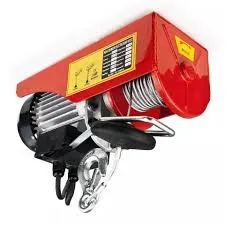


Types of Fall Protection Ensuring Safety in High Places
Fall protection is a crucial aspect of workplace safety, particularly in industries such as construction, maintenance, and telecommunications where employees frequently work at heights. Falls are one of the leading causes of workplace injuries and fatalities, making it imperative for employers and workers to understand the various types of fall protection available. In this article, we will explore the different categories of fall protection systems, their applications, and the importance of using the right equipment to keep workers safe.
1. Personal Fall Protection Systems
Personal fall protection systems are designed to protect individual workers from falling. They typically consist of three main components a harness, a connector, and an anchor point.
- Harnesses A full-body harness is worn by the worker and distributes the force of a fall across the body. It is essential that harnesses are properly fitted to ensure safety and comfort.
- Connectors Connectors are devices such as carabiners or snaphooks that link the harness to the anchor point. It's crucial that these connectors are rated for the weight of the worker and any tools or equipment they might be carrying.
- Anchor Points These are fixed points that the fall protection system attaches to, typically designed to withstand the force of a fall. These can be structural elements of a building or specific fall protection anchors that are installed for this purpose.
2. Guardrails
Guardrails are a passive form of fall protection that provides a physical barrier to prevent falls from elevated surfaces such as roofs, balconies, and platforms. They are typically made of materials like steel or aluminum and must meet specific height and strength regulations to ensure effectiveness.
Guardrails offer the advantage of being more durable and requiring less maintenance than personal fall protection systems. However, they only protect workers who are near the edge of a surface and do not provide protection if a worker accidentally steps over the railing.
3. Safety Nets

Safety nets are another form of fall protection that can be employed in various construction settings. These nets are designed to catch workers in the event of a fall, preventing them from hitting the ground or other structures below.
Safety nets must be installed properly and should be positioned to minimize the distance a worker would fall before being caught. They are particularly useful at construction sites where workers are at significant heights and may not be able to utilize personal fall protection systems effectively.
4. Fall Arrest Systems
Fall arrest systems are designed to stop a fall in progress. These systems typically involve a combination of personal fall protection components and additional safety measures.
One frequently used fall arrest system is the self-retracting lifeline (SRL), which automatically extends and retracts as the worker moves about. If a fall occurs, the SRL locks quickly, effectively stopping the worker before they hit the ground.
5. Safety Training and Compliance
While having the right equipment is essential, safety training and compliance with regulations play a critical role in effective fall protection. Workers need to be educated on how to correctly use fall protection equipment and the importance of adhering to safety protocols.
Employers must ensure that employees receive training regularly and that all equipment is inspected and maintained. Compliance with organizations like the Occupational Safety and Health Administration (OSHA) provides guidelines that can help minimize risks associated with working at heights.
Conclusion
Understanding the different types of fall protection is essential for maintaining a safe work environment, especially in industries where workers engage in tasks at elevated heights. From personal fall protection systems and guardrails to safety nets and fall arrest systems, each method has its purpose and application. It is crucial for employers to assess their specific work environment, implement appropriate fall protection measures, and provide thorough training to ensure the safety and well-being of all employees. By prioritizing fall protection, organizations can significantly reduce the risk of falls and create a culture of safety that benefits everyone involved.



